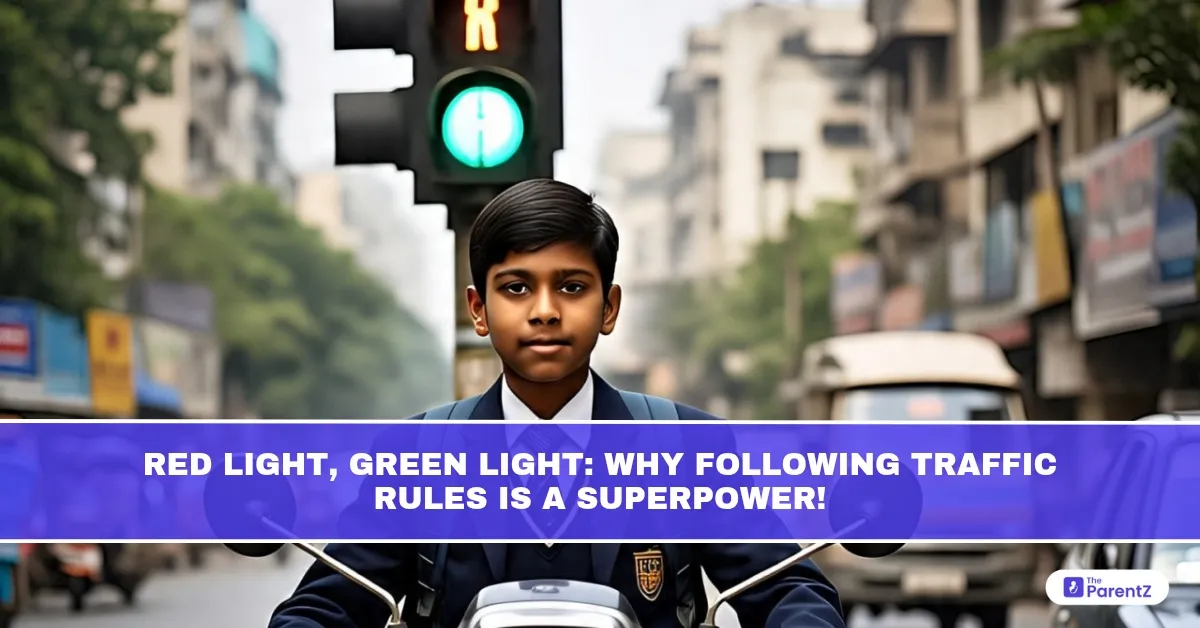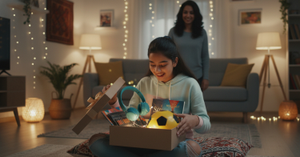Imagine this: your child is crossing the road, looking left and right like you taught them, waiting patiently for the green light. As they step forward, you smile, knowing they are learning the most important lesson of all, how to stay safe.
Following traffic rules is not just a boring set of instructions; it’s a real-life superpower that keeps children safe every single day. Whether it’s stopping at a red light, walking on the footpath, or waiting for the bus properly, every small action can prevent accidents and save lives. As parents, we have a huge role in helping our kids understand that traffic rules aren’t just about rulesthey’re about respect, care, and responsibility.
Why Traffic Rules Matter for Kids
Children are naturally curious. They love to run, explore, and sometimes dash across the road without thinking twice. But the world outside, especially roads, can be dangerous if they don’t know how to navigate safely.
Road accidents are one of the leading causes of injuries in children worldwide. Whether it’s a busy city street or a quiet lane, the risk is real. Cars can’t always stop in time, drivers may be distracted, and even a small mistake can lead to big consequences. That’s why following traffic rules isn’t just about obeying signs, it's about building habits that protect lives.
The Red Light, Green Light Game: A Fun Way to Teach Safety
One of the simplest and most effective ways to teach kids about traffic rules is through play. Remember the game “Red Light, Green Light” we played as kids? It’s more than just fun—it teaches an important concept: stop when it’s red, go when it’s green.
Here’s how you can turn this into a powerful learning tool:
- At the pedestrian crossing: When you’re out with your child, turn waiting at the signal into a mini “Red Light, Green Light” game. When the light is red, everyone freezes. When it’s green, you move forward together. Add a “Yellow Light” rule too: when the light is yellow, you slow down and get ready to stop.
- At home: Play the game in your living room or backyard. Say “Red Light!” and everyone freezes. Say “Green Light!” and everyone walks. Use “Yellow Light!” as a slow-motion movement. This simple game helps build muscle memory for real-life situations.
Everyday Scenarios That Teach Big Lessons
Traffic safety isn’t limited to big roads. Every day, moments can become small lessons that add up:
- Crossing the street: Before stepping off the footpath, ask your child, “What do we need to do?” Let them answer: Look left, right, and left again. Check for vehicles. Walk, don’t run, across the road. Praise them for remembering!
- Getting on and off the bus: Teach your child to wait for the bus to stop completely, stand back from the edge, and never cross the road until the bus has driven away. Remind them that bus drivers have blind spots.
- Cycling safety: If your child rides a bicycle, explain why helmets are a must, even on short rides. Practice stopping at junctions, using hand signals, and riding in a straight line. Make it fun: “Your helmet is your superhero shield!”
- Walking on the footpath: Explain that the footpath is the “safe zone” for people. If there’s no footpath, walk on the side of the road facing traffic so you can see vehicles coming toward you.
Common Mistakes Kids Make and How to Prevent Them
Children are still learning how to judge speed and distance, which means they can’t always tell how fast a car is coming. They might think a car far away gives them enough time to cross, but in reality, it might be much closer than they realise.
That’s why it’s important to:
- Model safe behaviour: If parents cross the road when the light is red, children learn that it’s okay to break rules. Show them that you stop, wait, and cross only when it’s safe.
- Talk about real-life situations: “Did you see that car not stop at the signal? What should we do when we see something like that?” Help them think critically and stay alert.
- Keep distractions away: Encourage your child to stay off phones or headphones when walking near roads. Remind them that being aware is their superpower.
Building Lifelong Habits
Good habits start young. When kids learn the importance of traffic rules early, they carry those habits into adulthood, keeping themselves and others safe. As parents, we can nurture this by:
Explaining the ‘why’ behind the rules: It’s not just “because I said so.” For example, “We stop at the red light because cars are coming fast, and they can’t always stop quickly.”
Making safety a family value: Talk about safety like you talk about kindness or honesty. It’s a way to care for yourself and others.
Praising safety choices: When your child waits for the signal, looks both ways, or reminds a friend to wear a helmet, celebrate that! Say, “I’m so proud of you for being safe. That’s a real superpower.”
Conclusion
Every time your child stops at a red light, waits for the green, or walks on the footpath, they’re not just following rules; they're practicing a life-saving skill. By making traffic safety fun, consistent, and meaningful, we empower them to make wise choices, protect themselves, and care for those around them.
So, the next time you see your child stop at the curb, look left and right, and wait patiently for the light to change, smile and know you’re raising a real-life hero, one who knows that their safety is in their hands, and that’s the greatest superpower of all.








Be the first one to comment on this story.